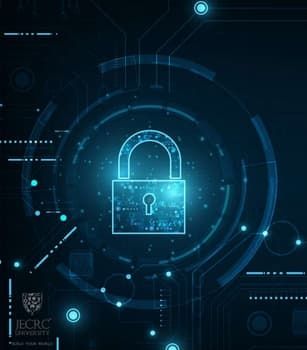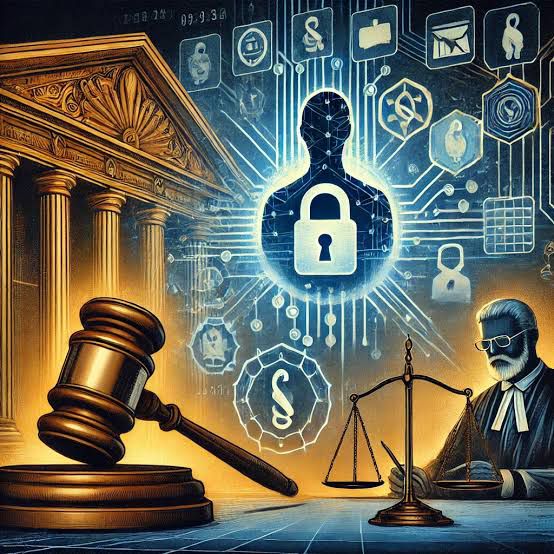Author: Shubhi Gupta, Gautam Buddha University
ABSTRACT
The advancement of technology has greatly elevated the role of digital evidence in both criminal and civil proceedings across Indian courts. Digital evidence, including emails, social media posts, vedios, and metadata, has become a crucial element in the administration of justice.
With the proliferation of electronic communication, online transactions, and cybercrime, Indian courts are frequently required to evaluate and admit digital records such as emails, CCTV footage, call records, metadata, and social media content. However, its admissibility is determined by a combination of procedural compliance and technical integrity. This article delves into the concept, legal framework, significant court cases, and obstacles related to the acceptance of digital evidence in Indian courts.
TO THE POINT
Digital evidence, also known as electronic evidence, refers to any information that is stored or transmitted digitally and can be presented in court. It encompasses a broad range — encompassing call records, emails, text messages, CCTV footage, digital documents, social media posts, computer logs, hard drives, cloud storage, and more. In India, the Indian Evidence Act, 1872 is the legislation that determines the acceptability of evidence in legal proceedings. As a result of the information technology act, 2000, substantial changes were introduced to this act to encompass electronic records within its purview. According to section 65b of the Indian Evidence Act, any information that is printed on paper, stored, recorded, or copied in optical or magnetic media produced by a computer is considered a document, as long as specific conditions are fulfilled.
USE OF LEGAL JARGON
To comprehend the legal aspects of digital evidence, it is crucial to be familiar with the following terminology:
Relevancy and admissibility are two distinct concepts in the legal realm. Relevancy assesses whether the evidence has a connection to the case, while admissibility verifies that the evidence meets the necessary legal requirements to be presented in court.
Hash value: a cryptographic algorithm that validates data consistency. Certificate under section 65b(4): a compulsory certificate that verifies the electronic evidence, providing information about the device, process, and operator.
Metadata: information about information, essential in verifying the accuracy and origin of digital content. Even if electronic records possess significant probative value, they may not be admissible in court if they do not meet the statutory requirements outlined in section 65b.
OBSTACLES
Despite having a clear legal framework, there are still many practical challenges when it comes to admitting digital evidence in court.
First, intricacy in the form of technology presents a substantial challenge. Many law enforcement officers, advocates, and even judicial officers lack advanced training in digital forensics, resulting in improper collection or presentation of evidence.
Second, acquiring a section 65b certificate from third-party platforms such as Google, Meta, or telecom providers can be a tedious and time-consuming process, particularly when servers are situated outside India.
This issue is further complicated by legal restrictions across borders and the lack of prompt collaboration. Maintaining a proper chain of custody is essential to uphold the integrity of digital evidence, yet it is frequently overlooked or poorly managed in practice.
Without the necessary documentation, the likelihood of data manipulation rises significantly. The inherent volatility of digital data makes it susceptible to manipulation, deletion, or corruption. Any changes made to the evidence can make it inadmissible or unreliable.
Currently, the judiciary faces challenges in terms of infrastructure and personnel, hindering their ability to analyze intricate digital data and leading to delays and potential injustices.
Consequently, despite the law’s growth, its successful implementation necessitates significant funding for training, technological advancements, and adherence to proper procedures.
LEGAL PRECEDENTS
1: In 2005, the case of State of Delhi v. Navjot Sandhu, involved a terrorist attack on the parliament building in Delhi.
The supreme court ruled that even without a certificate under section 65b, oral evidence could still be used to establish the authenticity of electronic records. This laid-back attitude resulted in disparities in the acceptance of evidence.
2: Anvar P.V. v P.K. Basheer (2014) – Groundbreaking change.
This ruling overruled Navjot Sandhu and concluded that section 65b is a standalone code, and the certificate under section 65b(4) is essential for the acceptance of digital evidence. The court explicitly mentioned that oral evidence cannot compensate for the absence of a certificate.
3: Shafi v. State of Himachal Pradesh (2018).
The court established a specific exception by permitting digital evidence without section 65b certificate, if the party did not have physical access to the device.
4: Arjun Pandit Rao Khotkar v. Kailash Kushanrao Gorantyal (2020)
This Constitution Bench judgment overruled the decision in Shafhi Mohammad and reaffirmed the principles laid down in Anvar P.V. It conclusively held that a certificate under Section 65B(4) of the Indian Evidence Act is mandatory for the admissibility of electronic records. If a party does not have the device, they can request the court to order the person who has the device (the concerned party) to provide the certificate. Electronic proof without a validation is inadmissible. This case resolved the legal matter and brought about consistency in the way it was interpreted.
CONCLUSION
India’s legal approach to digital evidence is still developing, guided by recent court rulings and gradual changes in legislation responding to the complexities of technology. Although courts have become more technologically advanced, strict adherence to procedural rules can sometimes hinder the pursuit of justice. While a section 65b certificate is essential for verifying the authenticity of a document, it can inadvertently result in the exclusion of valuable evidence. As India becomes more dependent on digital technologies in various aspects of life, such as governance, commerce, and social interactions, it is crucial for the legal system to keep up with these changes. To ensure effective law enforcement, it is crucial to provide proactive training, technological support for the judiciary, and continuous refinement of legislation. Judicial pronouncements, especially in Anvar P.V. and Arjun Pandit Rao Khotkar, have firmly established the mandatory requirement of certification under Section 65B, thereby bringing greater clarity and consistency to the legal standards governing the admissibility of electronic evidence.
However, practical challenges such as the lack of expertise, cross-border data issues, and inadequate digital forensics capacity continue to pose significant obstacles. By implementing legal reforms, fostering international collaboration, and enhancing capacity-building efforts, we can fully leverage the power of digital evidence. In the modern era, guaranteeing due process and maintaining evidentiary integrity necessitates a justice system that is not only legally sound but technologically proficient.
FAQS
Q1: Can WhatsApp messages or screenshots be presented as evidence in a court of law?
WhatsApp chats, emails, and screenshots can be presented as evidence in court if they fulfill the criteria outlined in section 65b of the Indian Evidence Act, 1872. A basic printout or screenshot is not enough unless it is accompanied by a valid section 65b certificate, which verifies that the record was created as part of regular business operations and that the device used was in proper working condition.
Q2: Is it possible to utilize CCTV recordings as proof in a court of law?
Yes, CCTV footage is admissible as long as it meets the requirements outlined in section 65b. If the footage is saved on a digital video recorder (DVD) or hard disk, it must be duplicated in the presence of witnesses and accompanied by a 65b certificate. Alternatively, the original recording device (e.g., DVD) can be presented as evidence in court.
Q3: What function do hash values serve in the context of digital evidence?
Hash values, such as md5 and sha256, are employed to ensure the integrity and authenticity of digital files. A hash value is a distinctive digital signature. When a file is either created or transferred, its hash value can be utilized to verify its integrity and detect any potential tampering. In a courtroom setting, comparing hash values between the original and duplicate of a file can provide evidence that the digital evidence has not been altered. While not mandatory, courts are increasingly acknowledging the importance of hash verification in forensic investigations, particularly in cases involving cybercrime.
Q4: Is video proof captured on a mobile phone admissible in court?
Yes, provided it meets the requirements of section 65b. When a mobile phone video is used as evidence, the party must provide a certificate that shows when and how the recording was made, as well as confirming that the mobile phone was functioning properly at that time. In the absence of a certificate, the mobile device itself must be produced for examination. Without one of these two options, the court may deem the video inadmissible.
Q5: Is it possible for digital evidence to be accepted without the opportunity for cross-examination of the person who certified its authenticity?
Under the Indian Evidence Act, an electronic record can be admitted in evidence if it is accompanied by a valid certificate under Section 65B. Nevertheless, if the opposing party contests the authenticity of the document, they can request the court to summon the certifier for questioning. According to section 139 of the evidence act, an individual submitting an affidavit or certificate can be questioned during cross-examination if necessary.




